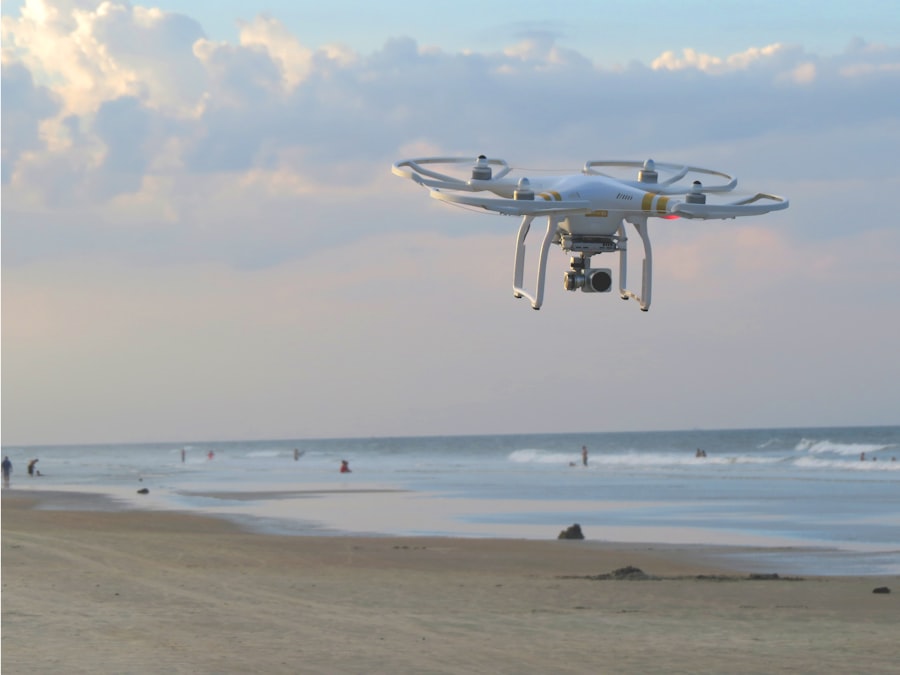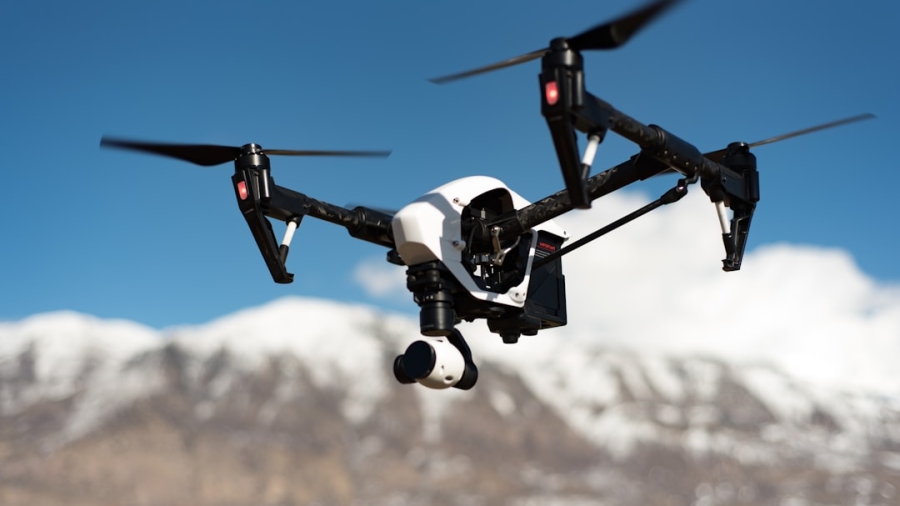In recent years, the landscape of logistics and delivery has undergone a significant transformation, largely driven by advancements in technology and the increasing demand for faster, more efficient services. The rise of drone delivery services represents a pivotal shift in how goods are transported, particularly in urban environments where traffic congestion and limited access can hinder traditional delivery methods. Companies like Amazon, Google, and various startups have invested heavily in developing drone technology, aiming to revolutionize the last-mile delivery process.
This innovation is not merely a response to consumer demand for speed; it also reflects a broader trend towards automation and the integration of artificial intelligence in everyday operations. As these companies continue to refine their drone capabilities, we are witnessing the emergence of a new era in logistics that promises to reshape the way we think about delivery. The proliferation of drone delivery services is also fueled by the global pandemic, which has accelerated the shift towards contactless transactions and home deliveries.
With more people relying on online shopping and delivery services during lockdowns, the need for efficient and safe delivery methods became paramount. Drones offer a solution that minimizes human contact while ensuring timely deliveries. Furthermore, as urban populations grow and e-commerce continues to expand, traditional delivery methods face increasing pressure to adapt.
Drones can navigate through congested cityscapes, bypassing traffic jams and reducing delivery times significantly. This capability not only enhances customer satisfaction but also positions drone delivery as a viable alternative to conventional logistics, paving the way for widespread adoption in the coming years.
Key Takeaways
- Drone delivery services are on the rise, offering a new and innovative way to deliver goods to customers.
- Advantages of drone delivery include faster delivery times, reduced delivery costs, and the ability to reach remote or hard-to-access areas.
- Challenges and limitations of drone delivery include limited payload capacity, weather conditions, and regulatory restrictions.
- Drone delivery can have a positive impact on the environment by reducing carbon emissions and traffic congestion.
- The future of drone delivery technology holds promise for improved efficiency, expanded capabilities, and increased integration with other delivery methods.
Advantages of Drone Delivery
One of the most compelling advantages of drone delivery is its potential to drastically reduce delivery times. Unlike traditional vehicles that are often subject to traffic delays and road conditions, drones can fly directly to their destination, significantly cutting down on transit time. This efficiency is particularly beneficial for urgent deliveries, such as medical supplies or perishable goods, where every minute counts.
Moreover, drones can operate in various weather conditions and reach remote or hard-to-access locations that may be challenging for conventional delivery vehicles. This capability not only enhances service reliability but also expands the reach of businesses, allowing them to serve customers in previously underserved areas. In addition to speed, drone delivery services offer a cost-effective solution for businesses looking to streamline their operations.
By reducing reliance on human labor and traditional vehicles, companies can lower their operational costs while increasing delivery capacity. Drones require less maintenance than trucks and can be deployed in fleets to handle multiple deliveries simultaneously. This scalability allows businesses to respond more effectively to fluctuations in demand without incurring significant overhead costs.
Furthermore, as technology continues to advance, the initial investment in drone infrastructure is expected to decrease, making it an increasingly attractive option for small and medium-sized enterprises. The combination of speed and cost efficiency positions drone delivery as a game-changer in the logistics industry.
Challenges and Limitations of Drone Delivery

Despite the numerous advantages associated with drone delivery services, several challenges and limitations must be addressed before widespread adoption can occur. One of the primary concerns is the regulatory landscape surrounding drone operations. Governments around the world are still grappling with how to integrate drones into existing airspace systems while ensuring safety and compliance with aviation regulations.
Issues such as air traffic management, flight path restrictions, and no-fly zones pose significant hurdles for companies looking to implement drone delivery services on a large scale. Additionally, the lack of standardized regulations across different regions complicates matters further, creating uncertainty for businesses that wish to expand their operations internationally. Another significant challenge lies in the technological limitations of current drone systems.
While advancements have been made in battery life, payload capacity, and navigation systems, many drones still face constraints that hinder their effectiveness in real-world applications. For instance, battery life remains a critical issue; most commercial drones can only fly for a limited duration before needing to recharge or swap batteries. This limitation restricts their range and necessitates strategic planning for delivery routes.
Furthermore, adverse weather conditions such as high winds or heavy rain can impede drone operations, raising questions about reliability during inclement weather. Until these technological barriers are overcome, the full potential of drone delivery services may remain unrealized.
The Impact of Drone Delivery on the Environment
The environmental implications of drone delivery services are a topic of growing interest as society becomes increasingly aware of sustainability issues. Drones have the potential to reduce carbon emissions associated with traditional delivery methods significantly. By replacing gas-guzzling delivery trucks with electric-powered drones, companies can minimize their carbon footprint while still meeting consumer demands for rapid service.
Additionally, drones are generally more energy-efficient than conventional vehicles due to their ability to fly directly to destinations without being hindered by traffic or road conditions. This efficiency not only benefits individual companies but also contributes positively to broader environmental goals aimed at reducing greenhouse gas emissions. However, it is essential to consider the entire lifecycle of drone technology when evaluating its environmental impact.
The production and disposal of drones involve resource extraction and energy consumption that can offset some of the environmental benefits gained during operation. Moreover, as drone usage increases, concerns about noise pollution and its effects on wildlife have emerged. Drones flying at low altitudes may disrupt local ecosystems or disturb wildlife habitats, raising ethical questions about their deployment in certain areas.
Therefore, while drone delivery services hold promise for reducing environmental impact compared to traditional logistics methods, a comprehensive approach must be taken to ensure that these benefits are realized without causing unintended harm.
The Future of Drone Delivery Technology
Looking ahead, the future of drone delivery technology appears promising yet complex. As research and development continue to advance at a rapid pace, we can expect significant improvements in various aspects of drone capabilities. Innovations such as enhanced battery technology could lead to longer flight times and greater payload capacities, enabling drones to handle more substantial deliveries over longer distances.
Additionally, advancements in artificial intelligence and machine learning will likely enhance navigation systems, allowing drones to operate more autonomously and efficiently in crowded urban environments. These technological improvements will not only increase the feasibility of drone deliveries but also expand their applications across various industries. Moreover, as public acceptance of drone technology grows, we may see an increase in partnerships between businesses and local governments aimed at integrating drones into urban infrastructure.
Initiatives such as designated drone delivery zones or air traffic management systems specifically designed for unmanned aerial vehicles could facilitate smoother operations and enhance safety measures. Furthermore, as consumer preferences continue to evolve towards faster and more convenient service options, businesses will be compelled to adopt drone technology as part of their logistics strategies. The convergence of technological advancements and changing consumer expectations will undoubtedly shape the future landscape of drone delivery services.
Regulations and Safety Concerns for Drone Delivery

The successful implementation of drone delivery services hinges significantly on establishing robust regulations and addressing safety concerns associated with their operation. Regulatory bodies worldwide are working diligently to create frameworks that govern drone usage while ensuring public safety and privacy protection. These regulations encompass various aspects such as flight altitude restrictions, no-fly zones near airports or populated areas, and requirements for remote pilot certification.
Striking a balance between fostering innovation in drone technology and safeguarding public interests remains a critical challenge for policymakers. Safety concerns surrounding drone operations extend beyond regulatory compliance; they also encompass issues related to potential accidents or malfunctions during flights. Drones must be equipped with advanced safety features such as collision avoidance systems and fail-safe mechanisms to mitigate risks associated with technical failures or unforeseen circumstances.
Additionally, public perception plays a crucial role in shaping the acceptance of drone delivery services; concerns about privacy invasion or noise pollution can hinder widespread adoption if not adequately addressed by companies and regulators alike. As the industry evolves, ongoing dialogue between stakeholders—including businesses, regulators, and communities—will be essential in developing effective safety protocols that instill confidence in drone technology.
The Role of Drones in Last-Mile Delivery
Drones are poised to play a transformative role in last-mile delivery—a critical segment of the logistics chain that often presents significant challenges for traditional transportation methods. The last mile refers to the final leg of the delivery journey from a distribution center to the end consumer’s doorstep, which is often characterized by high costs and inefficiencies due to traffic congestion and urban infrastructure limitations. Drones offer a solution that can bypass these obstacles by flying directly to customers’ locations without being impeded by road conditions or congestion.
This capability not only enhances efficiency but also allows businesses to provide faster service options that meet growing consumer expectations for immediacy. Furthermore, drones can significantly improve accessibility in underserved areas where traditional delivery methods may struggle due to geographical barriers or lack of infrastructure. In rural communities or regions affected by natural disasters, drones can deliver essential supplies such as food, medicine, or emergency equipment quickly and efficiently—potentially saving lives in critical situations.
As companies continue to explore innovative applications for drones within last-mile logistics, we can expect an evolution in how goods are delivered across various sectors—from e-commerce giants seeking competitive advantages to humanitarian organizations aiming to provide aid where it is needed most. The integration of drones into last-mile delivery systems represents not just an operational improvement but also a fundamental shift towards more agile and responsive logistics solutions that cater to diverse consumer needs.
In the context of technological advancements in logistics, you might find the article “How Drones Are Revolutionizing Package Delivery” particularly insightful. For further reading on related technological innovations, consider exploring this article which delves into various tech trends that are shaping different industries, including how drones are being integrated into modern business practices to enhance efficiency and reduce delivery times. This piece provides a broader perspective on the impact of technology in our daily operations and business environments.
FAQs
What are drones?
Drones, also known as unmanned aerial vehicles (UAVs), are aircraft that are operated without a human pilot on board. They can be controlled remotely by a human operator or autonomously by onboard computers.
How are drones revolutionizing package delivery?
Drones are revolutionizing package delivery by offering a faster and more efficient way to transport goods. They can bypass traffic and deliver packages directly to a customer’s doorstep, reducing delivery times and costs.
What are the benefits of using drones for package delivery?
Some of the benefits of using drones for package delivery include faster delivery times, reduced carbon emissions, lower delivery costs, and the ability to reach remote or hard-to-access areas.
What are the challenges of using drones for package delivery?
Challenges of using drones for package delivery include regulatory restrictions, limited payload capacity, weather conditions, and safety concerns related to flying in populated areas.
Which companies are currently using drones for package delivery?
Several companies, including Amazon, UPS, and Google’s Wing, are actively testing and implementing drone delivery services for packages in various locations around the world.
What are the future possibilities for drone delivery?
The future possibilities for drone delivery include expanding the range of goods that can be delivered, developing advanced drone technology, and integrating drones into existing delivery networks to create a more efficient and sustainable delivery system.

